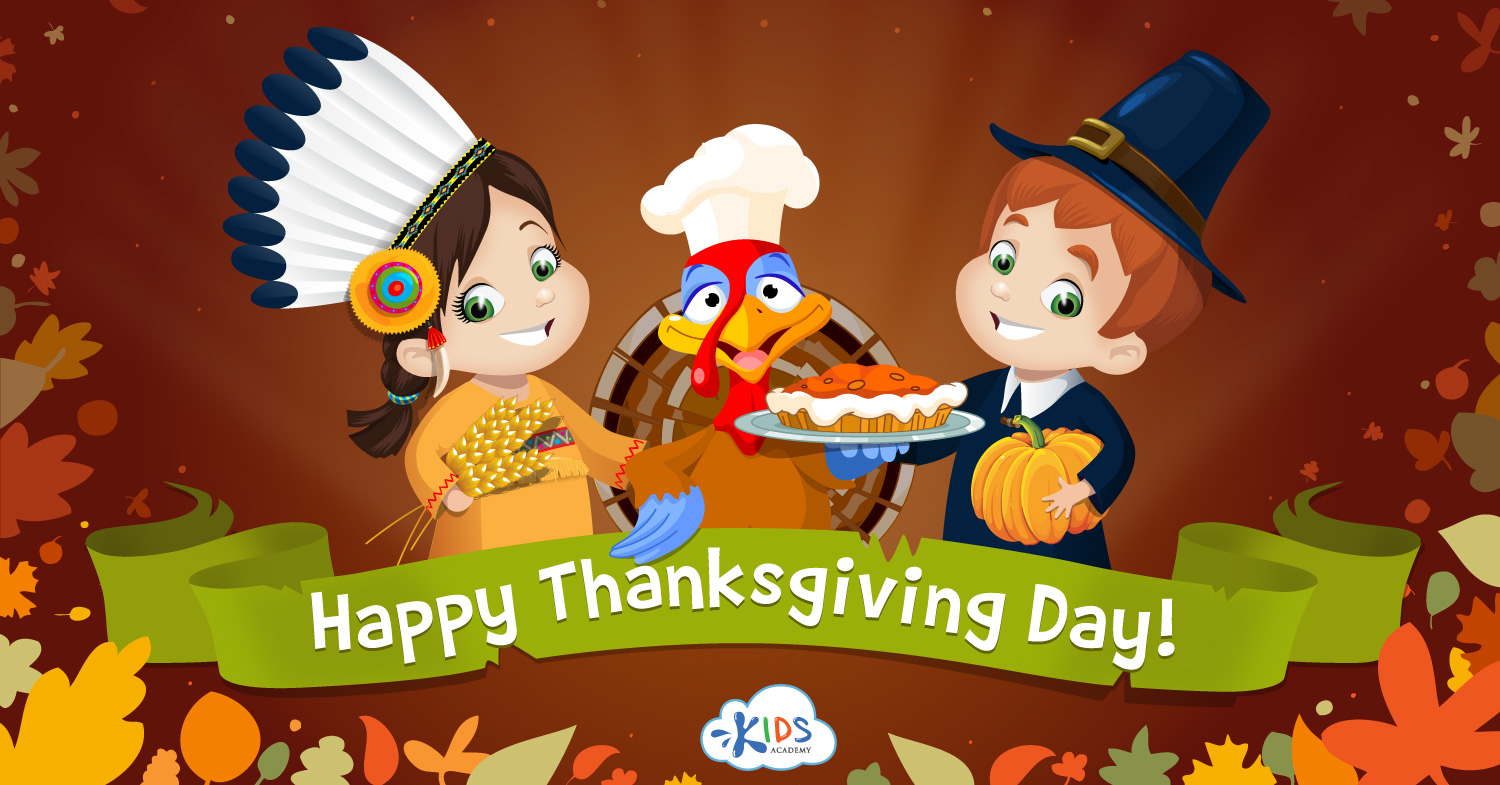Letter tracing skills Normal Worksheets for Ages 3-6
6 filtered results
-
From - To
Boost your child's early literacy with our "Letter Tracing Skills Normal Worksheets" designed specifically for ages 3-6! These engaging worksheets provide a fun and interactive way for young learners to develop essential pen control and handwriting skills. Each sheet features large, easy-to-trace letters, helping children familiarize themselves with the alphabet while improving fine motor skills. With colorful designs and playful themes, these worksheets keep children motivated and excited about learning. Perfect for use at home or in the classroom, our letter tracing worksheets set a strong foundation for your child's reading and writing journey. Start tracing today!
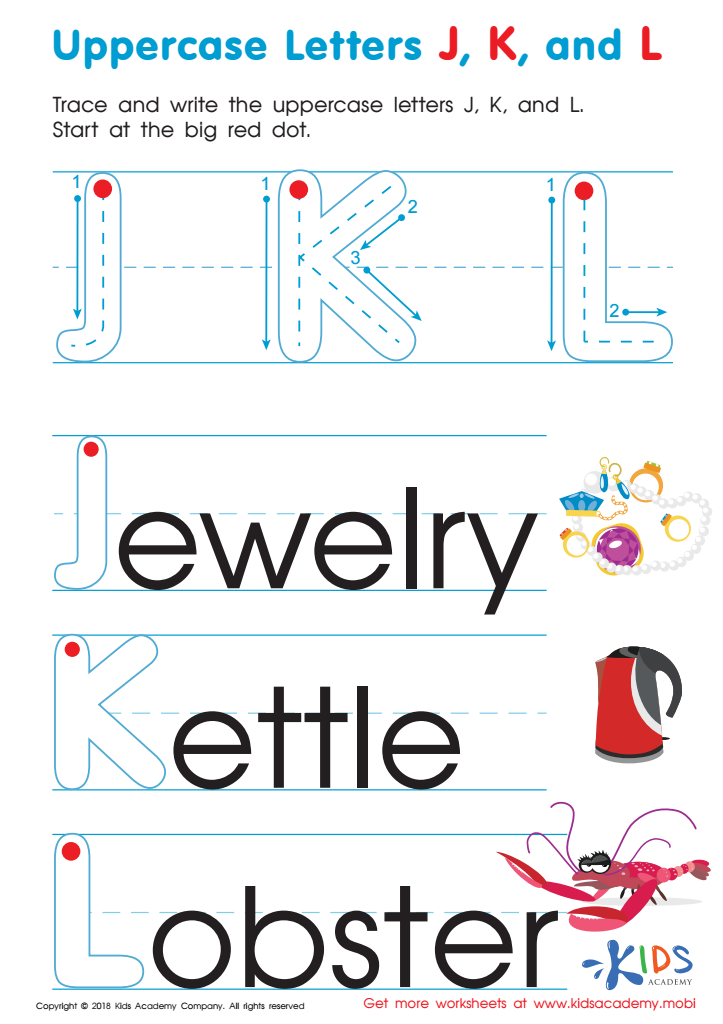

Uppercase Letters J, K, and L Worksheet
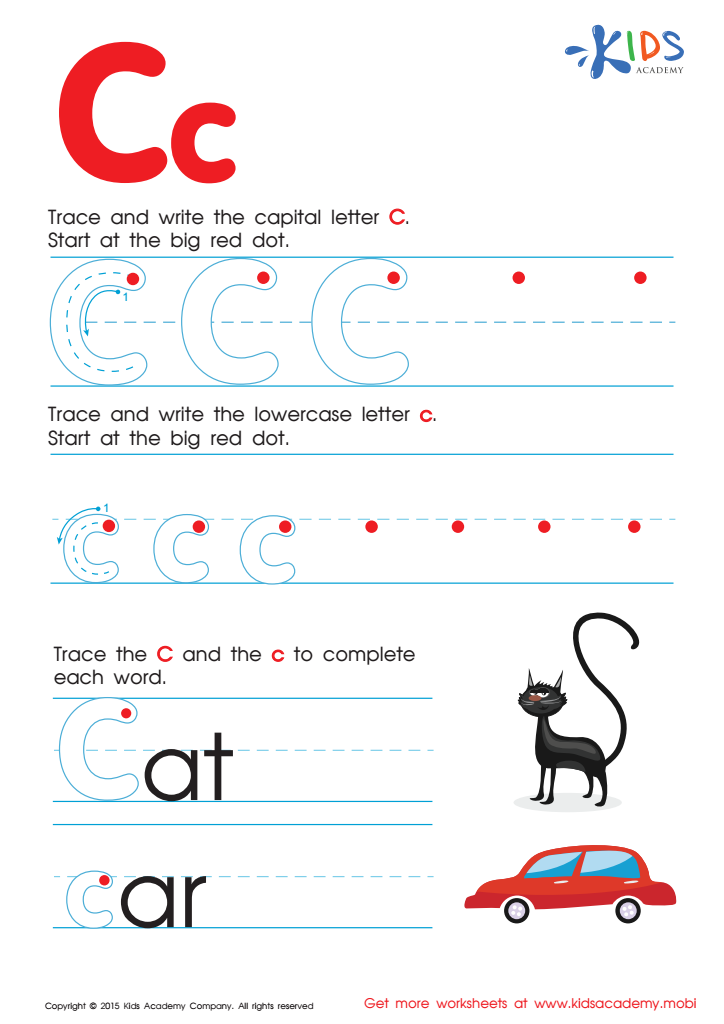

Letter C Tracing Page
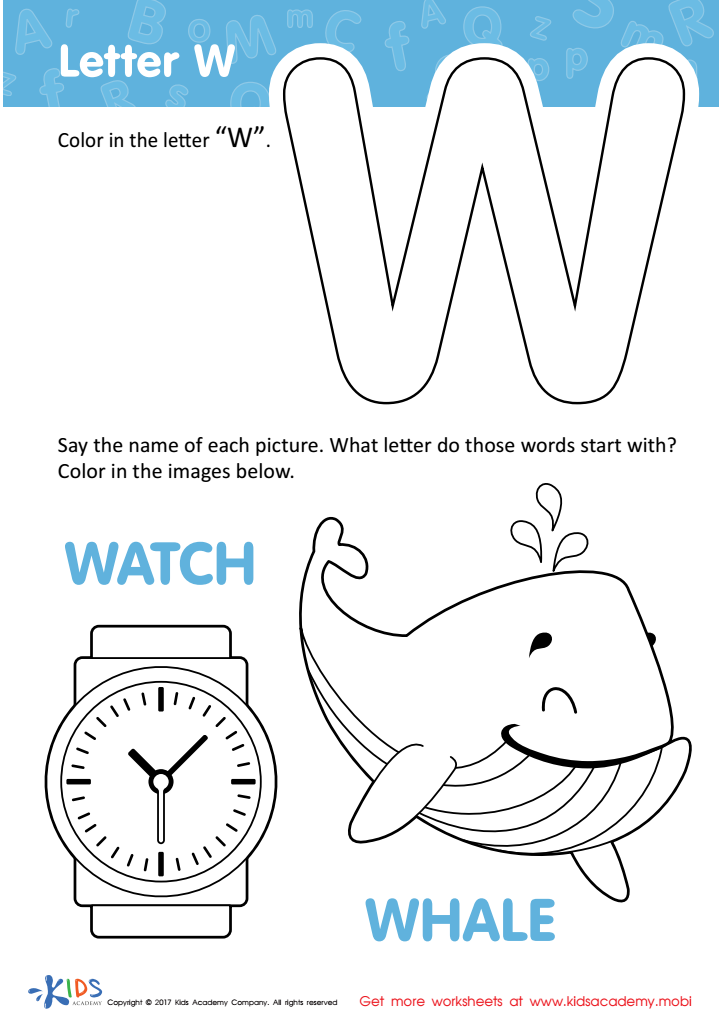

Letter W Coloring Sheet


Spanish Word Tracing: Hola Worksheet
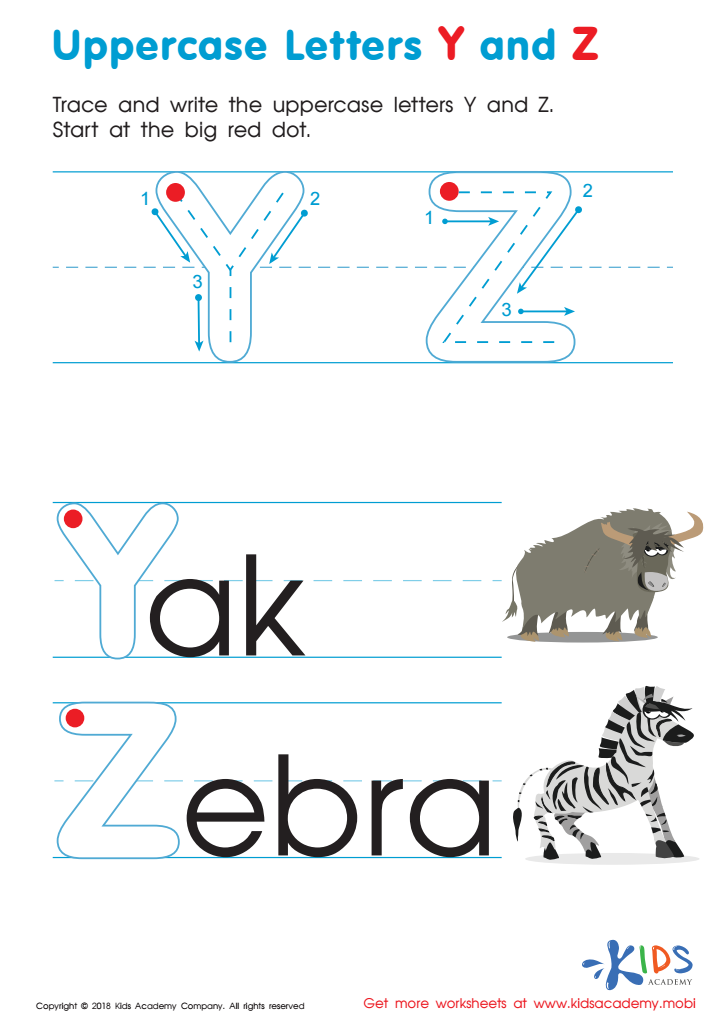

Uppercase Letters Y Z Worksheet
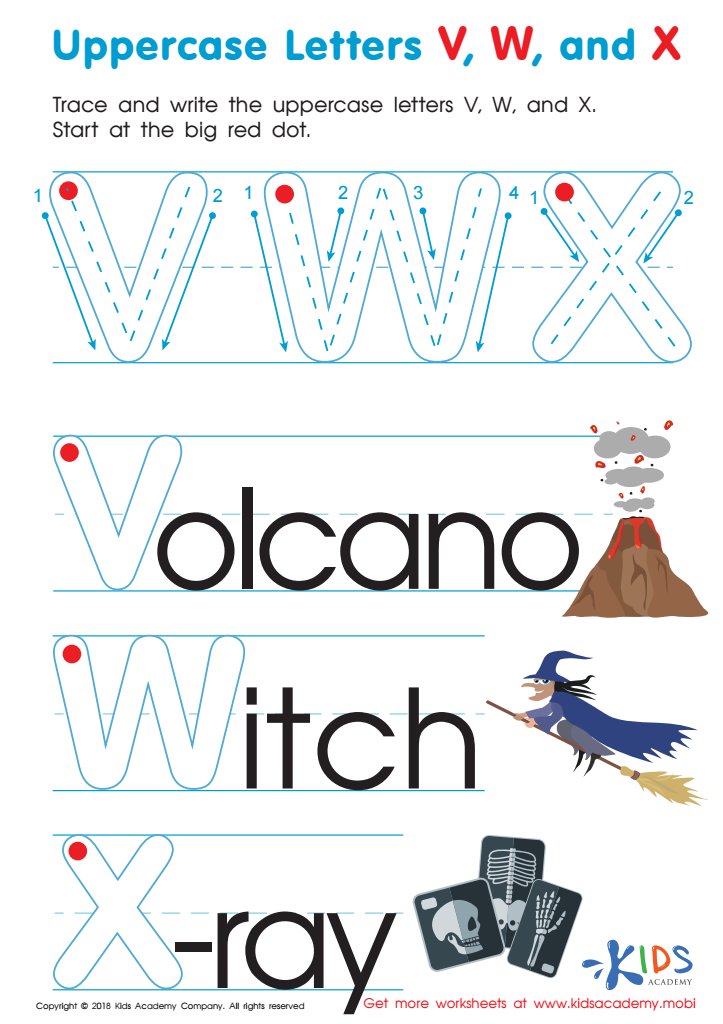

Uppercase Letters V, W, and X Worksheet
Letter tracing skills are crucial for children aged 3-6, as they form the foundation for literacy and overall academic success. At this developmental stage, children are refining their fine motor skills, which are essential not only for writing but for various daily activities. Tracing letters helps them develop muscle memory associated with letter formation, ensuring more proficient handwriting as they progress through their education.
Moreover, letter tracing aids in letter recognition, a vital step in learning to read. As children trace, they engage multiple senses—sight, touch, and sometimes sound—strengthening their understanding of the alphabet and sounds associated with each letter. This multisensory approach fosters a deeper connection to language, making it easier for children to transition into reading and writing.
Additionally, tracing activities promote focus and hand-eye coordination, essential skills for tasks requiring concentration and precision. The practice of letter tracing can also be a source of enjoyment, allowing for creative expression that boosts confidence.
For parents and teachers, investing time in promoting letter tracing is essential not just for skill development but for fostering a love of learning, setting children on a path toward academic achievement and lifelong literacy.
 Assign to My Students
Assign to My Students






